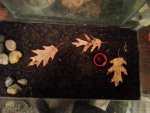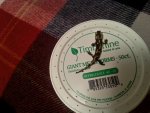Nioa
Member
Please help, my young fire salamander has been eating scarcely for weeks. His weight has dwindled to the point that his head is far bigger than any point in his belly. He shows interest in worms, but won't pursue them if they move away. I tried separating him to a small container so the worms couldn't dig, but it hasn't seemed to help. Is force feeding him an option? He's a bit smaller than an adult firebelly newt. I don't think he's sick because his tank mate is perfectly healthy.





